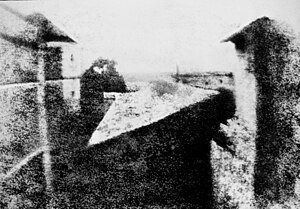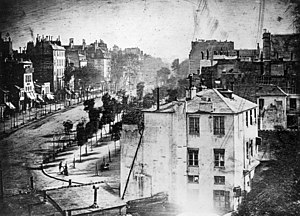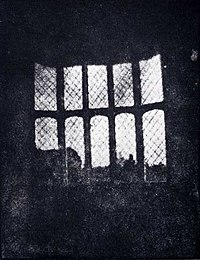Artistic media the camera arts/ART 102/Early development
The first attempts to capture an image were made from a camera obscura used since the 16th century. The device consists of a box or small room with a small hole in one side that acts as a lens. Light from an external scene passes through the hole and strikes the opposite surface inside where it is reproduced upside-down, but with color and perspective preserved. The image is usually projected onto paper adhered to the opposite wall, and can then be traced to produce a highly accurate representation. Experiments in capturing images on film had been conducted in Europe since the late 18th century.
During the 1830’s, Louis Daguerre, having worked with Niepce earlier, developed a more reliable process to capture images on film by using a polished copper plate treated with silver. He termed the images made by this process Daguerreotypes. They were sharper in focus and the exposure times were shorter. His photograph Boulevard du Temp from 1838 is taken from his studio window overlooking a busy Paris street. Still, with an exposure of ten minutes, none of the moving traffic or pedestrians stayed still long enough to be recorded. The only person in the image is a man on the lower left, standing at the corner getting his shoes shined.



